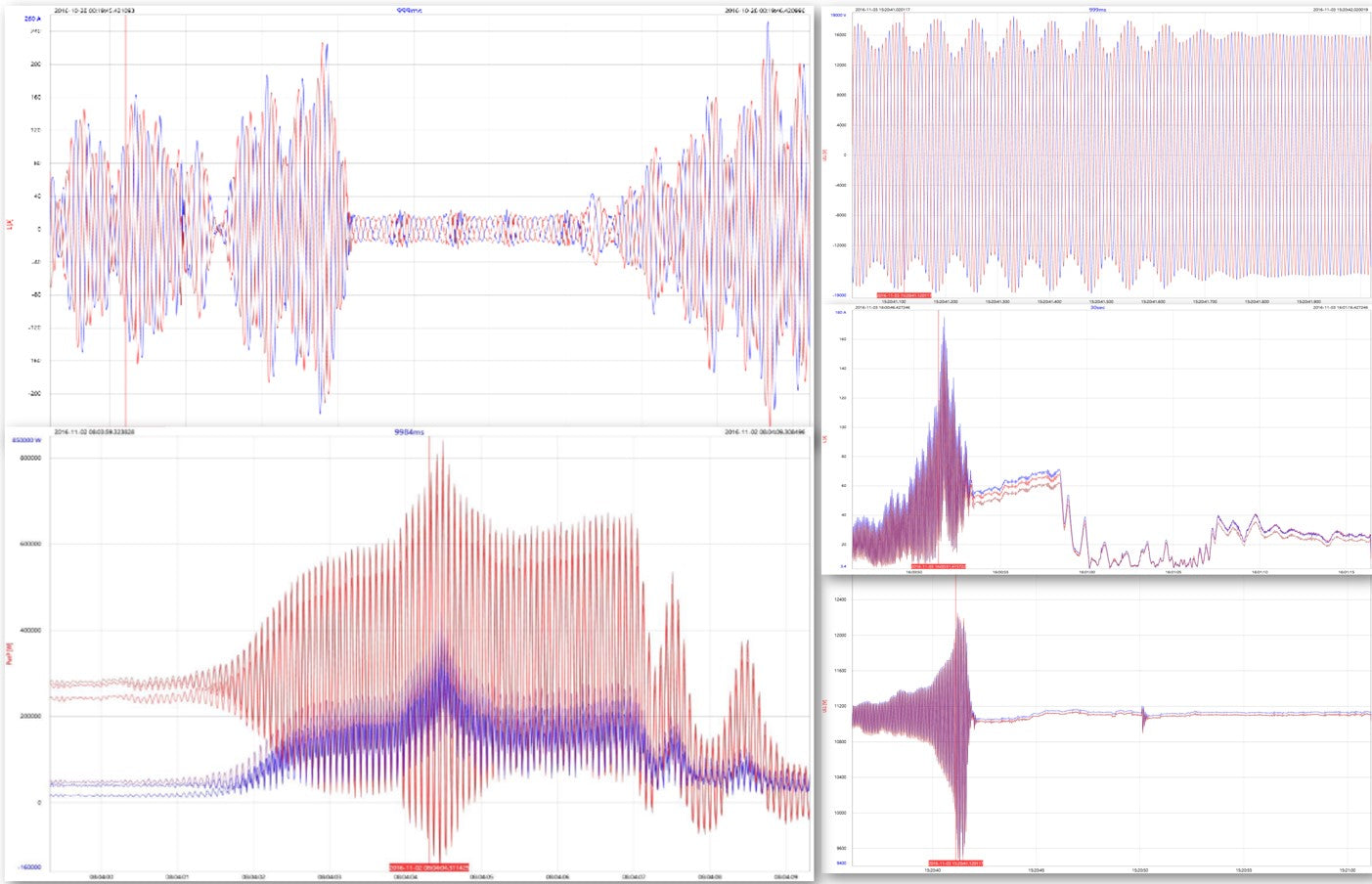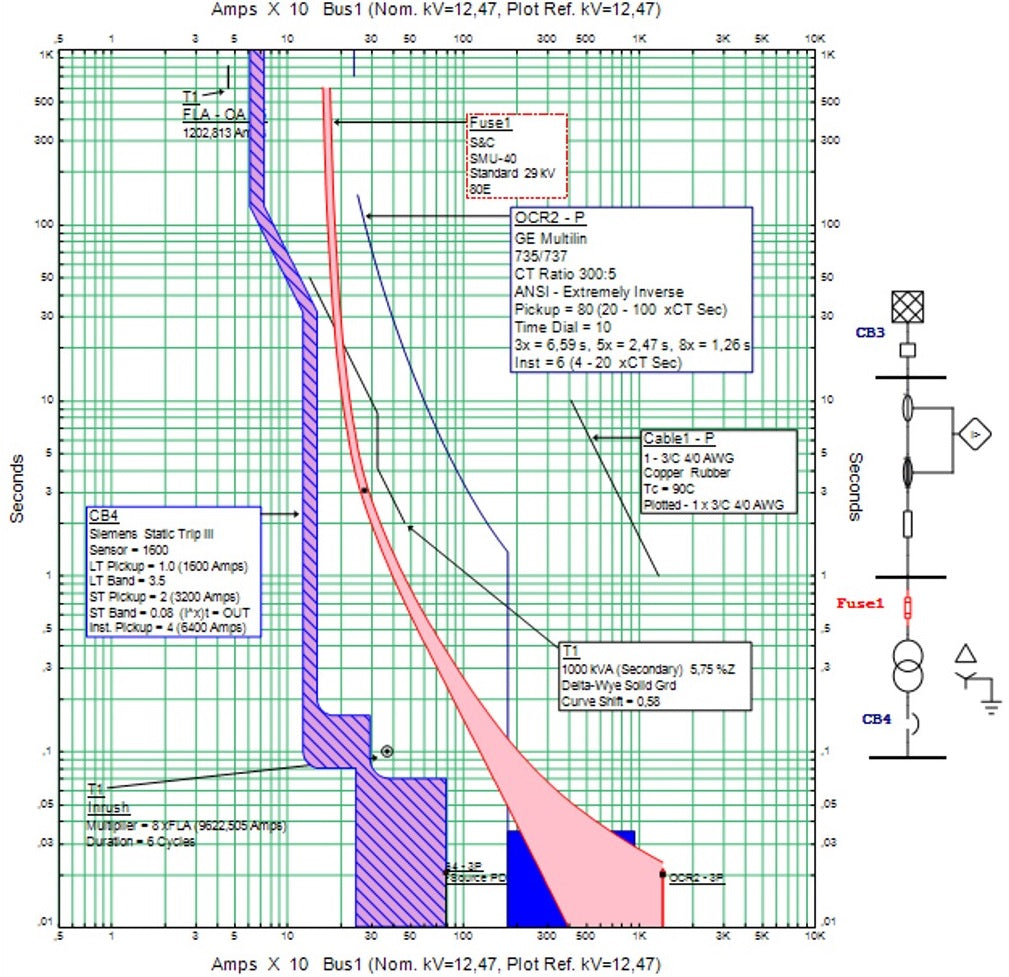Geavanceerde elektrotechnische diensten
Alfa Electric levert innovatieve oplossingen op basis van wetenschappelijke methoden voor vaktechnische problemen op het gebied van elektrotechniek voor bedrijfsactiviteiten in alle bedrijfstakken.
Deze professionele diensten zijn met name gericht op analyse van stroomsystemen, metingen van de stroomkwaliteit, adviesdiensten en magnetische ontwerp- en optimalisatiestudies.
We zijn er trots op een competent ingenieursbureau te zijn dat zijn klanten en partners een gevarieerd aanbod van zeer complexe engineeringdiensten kan aanbieden.
-
Alfa Electric aims to provide professional solutions to business operations in all areas of industry based on scientific methods for problems in their area of expertise.
With more than 25 years of experience and highly qualified a-eberle Power Quality Analyzers, Alfa Electric can perform simultaneous measurements at multiple points to detect most difficult power quality events affecting the efficiency and production continuity of the facility.With robust power quality analyzers and deep knowledge on power quality, Alfa Electric provides high quality engineering service to its customers and partners. Now we provide our cost effective and solution-oriented engineering services all around Europe!
-

-

With its highly qualified partners and academic consultants, Alfa Electric offers its knowledge for measurement studies including;
• Defining power quality problems,
• Modelling on power system analyses software
• Offering tailor made solutions according to problem including precise sizing studies. -

Beside hands-on measurements, Alfa Electric provides consultancy services before and after measurement processes. Including evaluation of recorded data and power quality events in order to define power quality problems and root cause.
-

Our solution-oriented services covers analyses on power system software. Analysis process begins with modelling the electrical grid with each details in single line diagrams and recorded measurement data in order to define proper specification for possible solutions precisely.
Load Flow Analysis
-
We calculate the system steady-state performance including bus voltages, branch/feeder loading rates and losses.
We simulate many ‘what if’ cases to be used in planning, design and operation of power systems.Our study results and findings are presented in the report that includes input data of the constructed model and all required results including abnormal voltages, loading or losses along with our comments and potential optimization recommendations.
-
Short Circuit Analysis
-
We calculate the available short-circuit currents at equipment locations throughout the power system. Evaluation of equipment ratings ensures that equipment can withstand, and interrupt an electrical fault.
The results are critical for proper system design and safety. We will recommend changes the system design to improve performance based on the analysis results.
Our study results and findings are presented in a report that includes input data of the constructed model and tables with line-to-ground faults currents as well as three-phase faults currents.
-
Arc Flash Analysis
-
We calculate arc flash hazards associated with energized work at locations throughout the power system in accordance with NFPA 70E, IEEE158 and CSA Z462 requirements.
Our calculations include flash protection boundary and incident energy with the resulting information being provided on arc flash warning labels to be installed on the distribution system electrical equipment.The arc flash hazard calculation study results in a report with all results and recommendations. The report includes:
• Full power system modeling data, as required for the study,
• Fault levels calculated for equipment evaluation and AF hazard calculation,
• Coordination of protective devices, including time-current characteristics diagrams,
• Tabulated arc flash calculation results for all locations,
• Arc flash labels in PDF format for all locations,
• Risk Reduction suggestions. -
Harmonic Analysis
-
We calculate harmonic voltages and HF currents throughout power system. This determines the effect of adding harmonic producing loads into a system. Our , engineers will determine the optimal solution to reduce the harmonics to the acceptable limits based on the calculated magnitudes of excessive harmonic voltages and currents.
We can also develop and recommend a complete harmonic filter solution. After the application, we conduct to verify the performance of the harmonic filtering equipment. with a report.
-
Switching Transient Analysis
-
We analyze system behavior during switching conditions to identify possible damaging voltage transients. An insulation coordination study, which compares surge arrester ratings with equipment BIL, will be completed to confirm the recommended surge protection system for the circuit being investigated. Results are used to design and specify equipment
such as snubbers and current limiting reactors. -

Ground Grid Analysis
-
We evaluate your switchyard or substation ground grid to ensure that the performance of the grid adheres to IEEE Standard 80, “Guide for Safety in AC Substation Grounding.”
This will involve utilizing a CYMGRD computer software program that models the ground grid under fault conditions. All voltages at the surface are calculated, allowing evaluation of Step and Touch potentials, to ensure the safety of plant personnel. The Ground Potential Rise is also calculated to evaluate the potential of damage to interconnected equipment.
-

Distributed Generation Integration Study
-
We evaluate and report according to the related grid code of distributed generation to be connected to transmission and distribution grid.
The results and findings are presented in a report that includes input data of the constructed model and reactive capability curves, harmonic distortion and flicker at PCC.
-

Lightning Protection Analysis
-
We analyze and study the plans in order to protect a switchyard, substation or a building from the lightning.
-

Protection Coordination Analysis
-
In our co-ordination study, the following is evaluated for each protective device:
• Operation on minimum fault current
• Ability to interrupt the maximum possible fault current
• Co-ordination with upstream and downstream protective devices
Our co-ordination study ensures that protective devices will have optimal settings that properly protect the system against fault conditions. At the same time, it offers selectivity: a fault will only disrupt the part of the system where it is located, whereas the rest of the system will be able to continue functioning as normal. -

-
Our study will result in a report that includes a short-circuit analysis, an overview of recommended settings and a graphical representation of device time-current characteristics.
Time-Current Curve
Time-current plots of protective device characteristics and equipment ratings provide graphical evidence that equipment is properly protected and protective devices are selective with one another. These curves are created using CYME and PSS SINCAL software.
Recommended Settings
Summary sheets provide a complete listing of the recommended settings and calibrating data for plotted protective devices along with the settings or ratings for all other protective devices in the system. These sheets greatly simplify and streamline the work performed by the field technicians setting the devices.
-
























